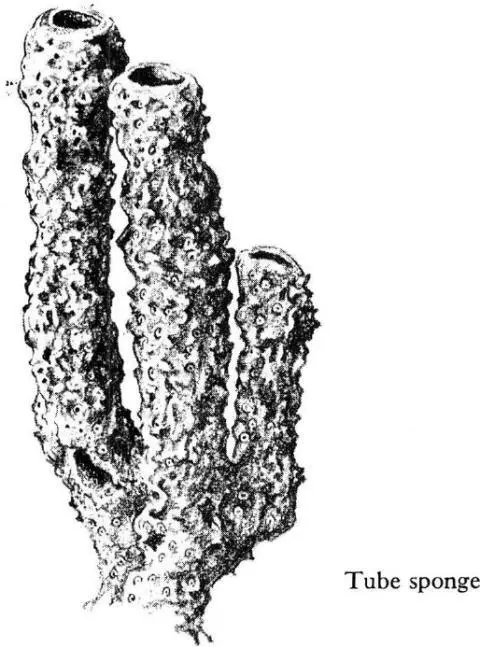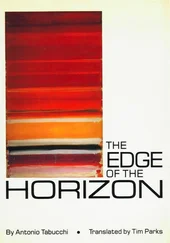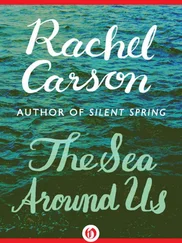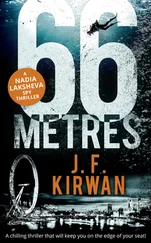
For hundreds of miles this world of swamp and forest created by the mangroves extends northward, sweeping from the Keys around the southern tip of the Florida mainland, reaching from Cape Sable north along the coast of the Gulf of Mexico through all the Ten Thousand Islands. This is one of the great mangrove swamps of the world, a wilderness untamed and almost unvisited by man. Flying above it, one can see the mangroves at work. From the air the Ten Thousand Islands show a significant shape and structure. Geologists describe them as looking like a school of fish swimming in a southeasterly direction—each fish-shaped island having an “eye” of water in its enlarged end, the heads of all the little “fish” pointing to the southeast. Before these islands came to be, one may suppose, the wavelets of a shallow sea heaped the sand of its floor into little ridges. Then came the colonizing mangroves, converting the ripple marks to islands, perpetuating in living green forest the shape and trend of the sand ripples.

Today we can see, from one generation of man to another, where several small islands have coalesced to form one, or where the land has grown out and an island has merged with it—sea becoming land almost before our eyes.
What is the future of this mangrove coast? If it is written in its recent past we can foretell it: the building of a vast land area where today there is water with scattered islands. But we who live today can only wonder; a rising sea could write a different history.
Meanwhile the mangroves press on, spreading their silent forests mile upon mile under tropical skies, sending down their grasping roots, dropping their migrant seedlings one by one, launching them into the drifting tides on far voyages.
And offshore, under the surface waters where the moonlight falls in broken, argent beams, under the tidal currents streaming shoreward in the still night, the pulse of life surges on the reef. As all the billions of the coral animals draw from the sea the necessities of their existence, by swift metabolism converting the tissues of copepods and snail larvae and minuscule worms into the substance of their own bodies, so the corals grow and reproduce and bud, each of the tiny creatures adding its own limy chamber to the structure of the reef.
And as the years pass, and the centuries merge into the unbroken stream of time, these architects of coral reef and mangrove swamp build toward a shadowy future. But neither the corals nor the mangroves, but the sea itself will determine when that which they build will belong to the land, or when it will be reclaimed for the sea.

NOW I HEAR the sea sounds about me; the night high tide is rising, swirling with a confused rush of waters against the rocks below my study window. Fog has come into the bay from the open sea, and it lies over water and over the land’s edge, seeping back into the spruces and stealing softly among the juniper and the bayberry. The restive waters, the cold wet breath of the fog, are of a world in which man is an uneasy trespasser; he punctuates the night with the complaining groan and grunt of a foghorn, sensing the power and menace of the sea.
Hearing the rising tide, I think how it is pressing also against other shores I know—rising on a southern beach where there is no fog, but a moon edging all the waves with silver and touching the wet sands with lambent sheen, and on a still more distant shore sending its streaming currents against the moonlit pinnacles and the dark caves of the coral rock.
Then in my thoughts these shores, so different in their nature and in the inhabitants they support, are made one by the unifying touch of the sea. For the differences I sense in this particular instant of time that is mine are but the differences of a moment, determined by our place in the stream of time and in the long rhythms of the sea. Once this rocky coast beneath me was a plain of sand; then the sea rose and found a new shore line. And again in some shadowy future the surf will have ground these rocks to sand and will have returned the coast to its earlier state. And so in my mind’s eye these coastal forms merge and blend in a shifting, kaleidoscopic pattern in which there is no finality, no ultimate and fixed reality—earth becoming fluid as the sea itself.
On all these shores there are echoes of past and future: of the flow of time, obliterating yet containing all that has gone before; of the sea’s eternal rhythms—the tides, the beat of surf, the pressing rivers of the currents—shaping, changing, dominating; of the stream of life, flowing as inexorably as any ocean current, from past to unknown future. For as the shore configuration changes in the flow of time, the pattern of life changes, never static, never quite the same from year to year. Whenever the sea builds a new coast, waves of living creatures surge against it, seeking a foothold, establishing their colonies. And so we come to perceive life as a force as tangible as any of the physical realities of the sea, a force strong and purposeful, as incapable of being crushed or diverted from its ends as the rising tide.
Contemplating the teeming life of the shore, we have an uneasy sense of the communication of some universal truth that lies just beyond our grasp. What is the message signaled by the hordes of diatoms, flashing their microscopic lights in the night sea? What truth is expressed by the legions of the barnacles, whitening the rocks with their habitations, each small creature within finding the necessities of its existence in the sweep of the surf? And what is the meaning of so tiny a being as the transparent wisp of protoplasm that is a sea lace, existing for some reason inscrutable to us—a reason that demands its presence by the trillion amid the rocks and weeds of the shore? The meaning haunts and ever eludes us, and in its very pursuit we approach the ultimate mystery of Life itself.
Protophyta, Protozoa: One-celled Plants and Animals
THE SIMPLEST FORMS of cellular life are the one-celled plants (Protophyta) and one-celled animals (Protozoa). In both groups, however, there are many forms that defy attempts to place them definitely in one category or another because they display characteristics usually considered animal-like along with others usually thought definitive of plants. The Dinoflagellata form such an indeterminate group, and are claimed both by zoologists and by botanists. Although a few are large enough to be seen without magnification, most are smaller. Some wear shells with spines and elaborate markings. Some have a remarkable, eye-like sense organ. All dinoflagellates are immensely important in the economy of the sea as food for certain fishes and other animals. Noctiluca is a relatively large dinoflagellate of coastal waters, where it produces brilliant displays of phosphorescence, or by day reddens the water Sphaerella the abundance of its pigmented cells. Other species are the cause of the phenomenon known as “red tide,” in which the sea is discolored and fishes and other animals die from poisons given off by the minute cells. The red or green scum of high tide pools, “red rain,” and “red snow” are growths of these forms, or of green algae (e.g., Sphaerella). Much phosphorescence or “burning” of the sea is caused by dinoflagellates, which create a uniformly diffused light, lacking large spots of illumination. Examined closely, in a vessel of water, the light is seen to consist of tiny sparks.
Читать дальше















